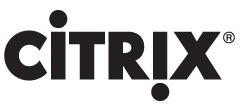
A patent is property and the claims of a patent determine the value of that property. The words are important, folks. Consider the following (fictitious) claim:
A love detector, the love detector comprising: a computer configured to determine whether a user is in love
That’s called a “functional” claim – the claim addresses what the computer does, but not how the computer does it. We don’t have a clue (at least from the claim) as to how the computer detects love. In short, a ‘functional’ claim is one directed to the result to be achieved, rather than the step-by-step process or mechanism of arriving at that result.
The patent statute specifically allows functional claims, in section 112(f). That section states:
An element in a claim… may be expressed as a means or step for performing a specified function without the recital of structure, material or acts…, and such claim shall be construed to cover the corresponding structure, material, or acts described in the specification… .
Our love detector example drawn as a section 112(f) claim could read as follows:
A love detector, the love detector comprising: a computer; means for the computer to determine whether a user is in love.
If a functional claim trips section 112(f), then the functional claim protects only the specific ways of achieving the desired result that are included in the patent application. That’s very limiting for computer implemented inventions. In computers and software, the invention may be the result and there often are many ways to program the computer to accomplish a particular result.
For many years, a patent applicant could avoid section 112(f) by avoiding the use of the term ‘means’ in the claim. Functional claims were OK and provided great flexibility, particularly for computer-implemented inventions. That all changed with the case of Williamson v Citrix Online.
In Williamson, the Federal Circuit Court considered patent claims to a virtual classroom system for remote learning. The Court overruled prior cases and concluded that the following was a ‘means’ claim subject to section 112(f):
a distributed learning control module for receiving communications … and for relaying communications …
Because the claim was a section 112(f) claim and limited to the application, the claim was unenforceable because the application did not include structure to support the claimed functions. The Court concluded that it was unimportant that persons knowledgeable in the art could easily craft computer code to accomplish the function. After Williamson, general claim terms like ‘mechanism,’ ‘element,’ and ‘device’ combined with a function are functional claims that may be subject to section 112(f).
Not all functional claims are section 112(f) claims. Several lower courts have concluded that an otherwise functional claim element where substantial detail is included to teach how the function is achieved does not trigger section 112(f).
Nonetheless, patent applications should now include ‘structure’ in the specification to support computer implemented claims. From Williamson, the application for the computer implemented invention must include an ‘algorithm’ or series of steps to accomplish the function. A flow chart can satisfy the algorithm requirement. The more detail, the better. The USPTO recently issued guidance on how patent examiners should examine applications that include functional claims to an invention that uses a computer. That guidance is also useful for anyone who owns a computer-implemented invention.
— R. Yarbrough, Esq.

